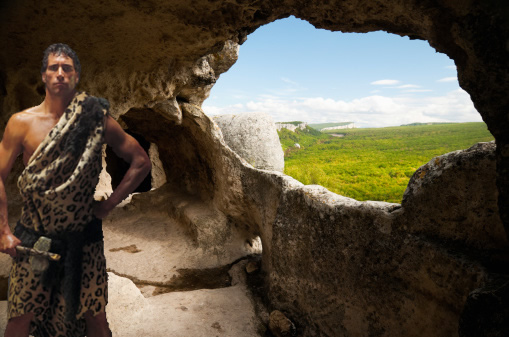Main Content
Lesson 1: The History and Development of Security
What is Security? And What Are Its Origins?
Security can be defined in a variety of ways, but one very good definition of it is provided by Fischer and Green (1998): "Security (italics in original) implies a stable, relatively predictable environment in which an individual or group may pursue its ends without disruption or harm and without fear of disturbance or injury" (p. 3). For thousands of years, individuals and societies have pursued security, which has been accomplished in a variety of ways. In addition, security has taken on both public and private forms. Charles Reith provides the following four phases that illustrate the development of security concerns:
- First, individuals or small community groups came together in search of collective security, to ease food finding or to satisfy other mutually felt individual needs;
- Second, they discovered the need for rules or laws. Historically people believed that passing "good" laws was sufficient; the ruler's army could enforce them;
- Third, they inevitably discovered that some community members would not obey the rules. Even the best laws people can devise are useless, and rulers and governments are powerless, if the laws are not obeyed.
- Fourth, in one form or another, means to compel the observance of rules were found and established. Sometimes they worked, but frequently they did not. Consequently, more communities have perished because they could not enforce their laws than have been destroyed by natural disasters or hostile aggression (as presented in Hess & Wrobleski, 1996, pp. 2-3).

Figure 1.2 Caveman Protecting his home
Among the variety of measures used to ensure security, Hess and Wrobleski (1996) aptly point out that rulers used "weapons, lakes or cliff dwellings, walls and gates." Thus, they made use of the natural and enhanced landscape to ensure their security. In ancient times people such as the Sumerians made use of private security forces and bodyguards to provide security. Fortresses were also popular in ancient times. The Great Wall of China, for example, was built between 220 BC and 200 BC. It was build to protect the Chinese from their enemies. Built of earth, stones, wood, and later, bricks, it stretches 4,000 miles and has walls over twenty feet high, to go along with a walkway that is more than fifteen feet wide. Besides the wall itself, an additional security feature was watch towers. These towers were used to "store weapons, house troops, and send smoke signals" (Wikipedia, 2007).

Figure 1.3 Great Wall, Watch Tower, Castle, and Fort
The Egyptians used intricate tombs to provide security for the treasures often buried with Pharaohs. Of these, Tutankhamen's, whose treasures have been part of a global tour for the past few decades, is the most famous one. Figure 1.4 illustrates the interior structure of King Tut's tomb. The figure reveals that while robbers did penetrate the tomb at various points in antiquity, the design of the tomb successfully kept them from reaching the treasury.

Figure 1.4 Interior Structure of King Tut's Tomb
